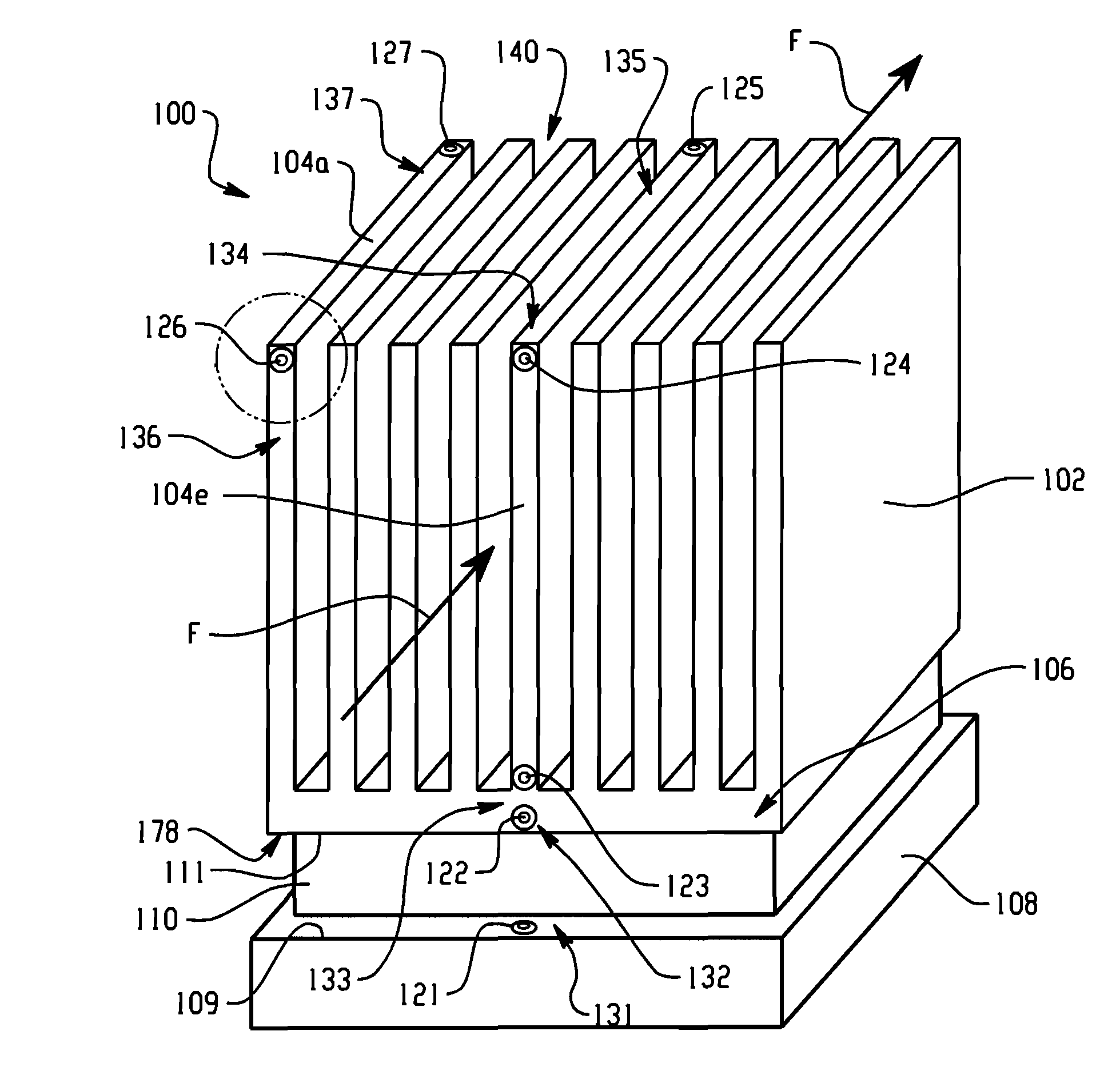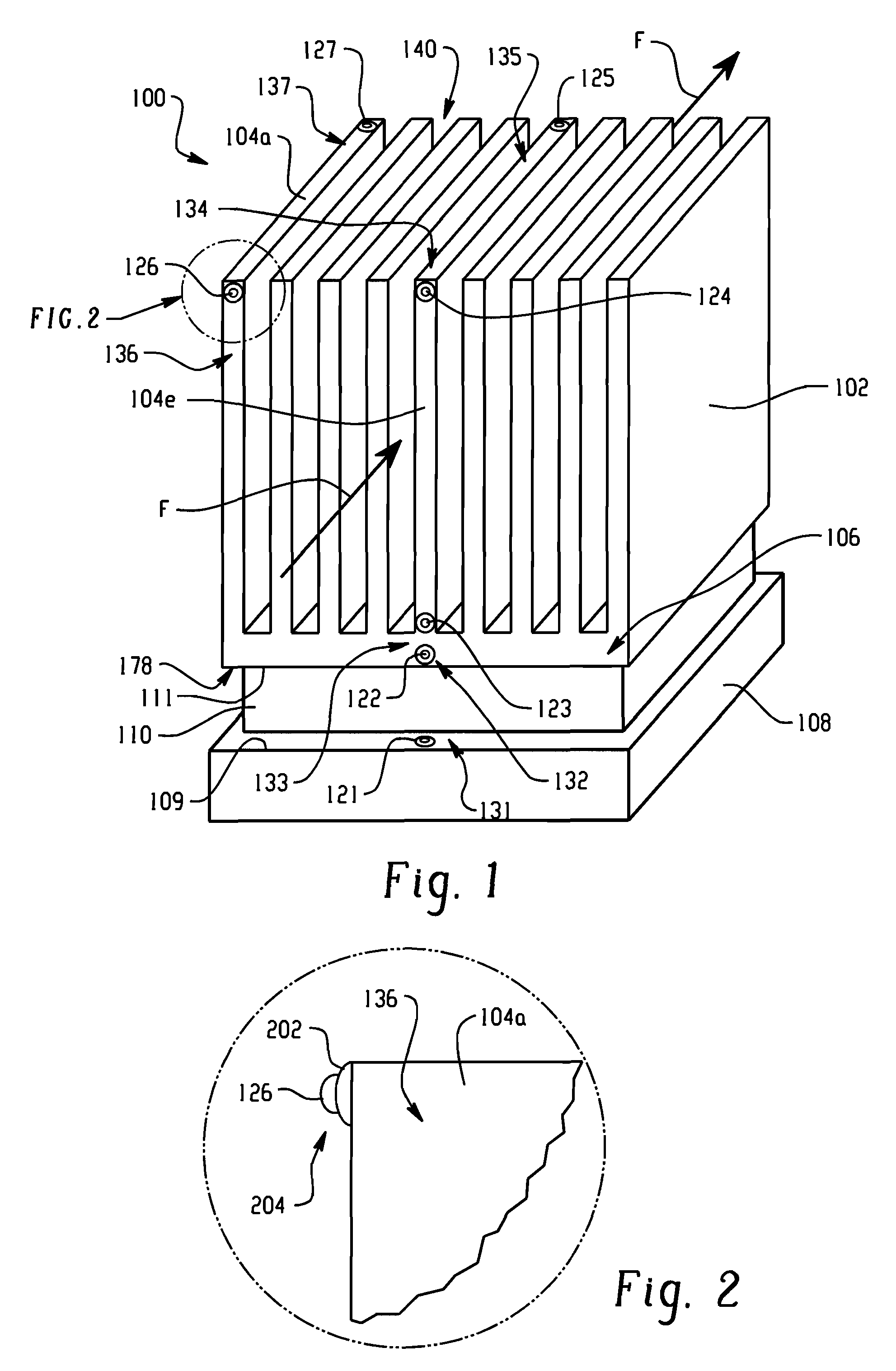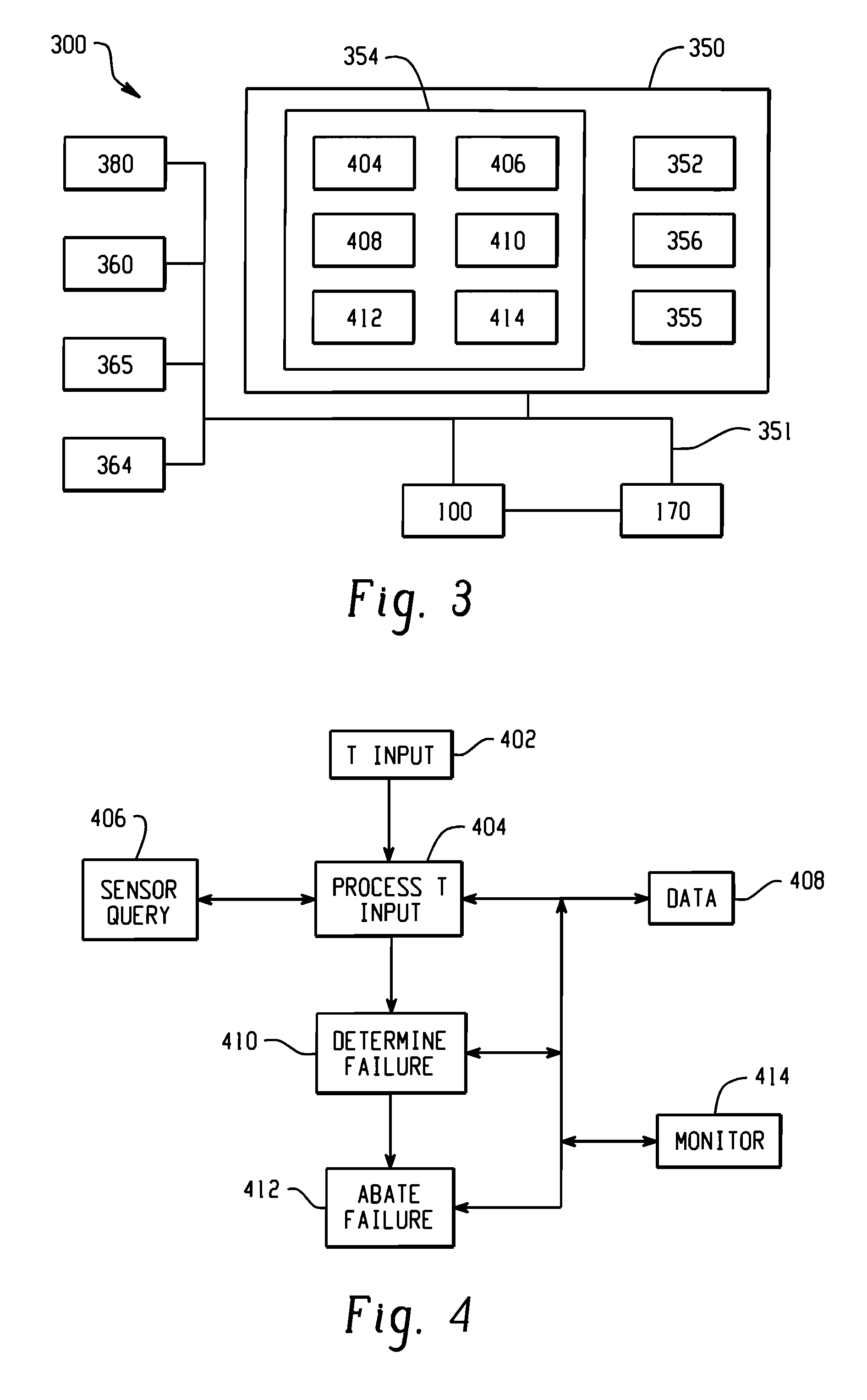Heat sink method, system, and program product
- Summary
- Abstract
- Description
- Claims
- Application Information
AI Technical Summary
Problems solved by technology
Method used
Image
Examples
Embodiment Construction
[0017]For convenience purposes, the Detailed Description of the Invention has the following sections
[0018]I. General Description
[0019]II. Computerized Implementation
I. General Description
[0020]FIG. 1 illustrates one embodiment of a heat sink assembly 100 according to the present invention. An air-cooled metallic heat sink 102, typically aluminum or copper, has a plurality of cooling fins 104 projecting vertically upward and generally parallel to each other from a base plate 106. The base plate 106 is attached to a heat-generating computer system component 108 through a thermally conductive Thermal Interface Material (TIM) attachment means 110. In the present embodiment the attachment means 110 is a thermal epoxy, though other adhesive means may be practiced; for example, in another embodiment the attachment means 110 is a direct mechanical means 110 such as a spring / clip assembly (not shown). The component 108 in the present example is a microprocessor chip 108, though the component...
PUM
 Login to View More
Login to View More Abstract
Description
Claims
Application Information
 Login to View More
Login to View More - R&D
- Intellectual Property
- Life Sciences
- Materials
- Tech Scout
- Unparalleled Data Quality
- Higher Quality Content
- 60% Fewer Hallucinations
Browse by: Latest US Patents, China's latest patents, Technical Efficacy Thesaurus, Application Domain, Technology Topic, Popular Technical Reports.
© 2025 PatSnap. All rights reserved.Legal|Privacy policy|Modern Slavery Act Transparency Statement|Sitemap|About US| Contact US: help@patsnap.com



